Let’s face it—most of us want our outdoor spaces to look like something out of a glossy home magazine, but our wallets often prefer the clearance aisle.
Creating a walkway doesn’t have to mean dropping thousands on high-end stone or professional labor. With a little grit, creativity, and a weekend or two, you can craft DIY walkways that are functional, beautiful, and budget-friendly.
I’ve done it myself. When I moved into a modest fixer-upper with a weedy backyard and nothing but mud connecting the porch to the garden shed, I knew it was time to get my hands dirty.
1. Gravel Pathway: The Budget-Friendly Classic
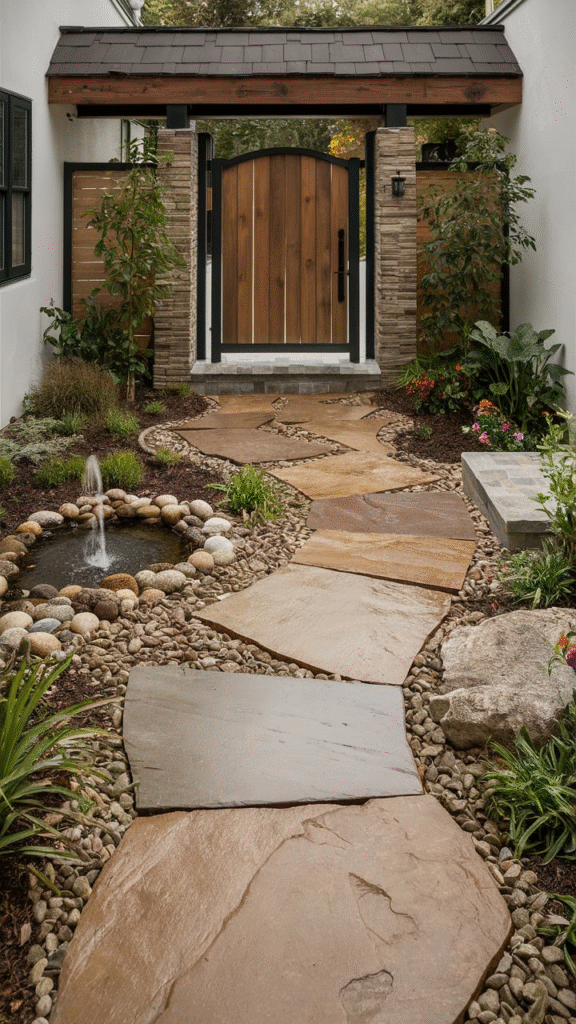
Gravel is like the jeans of walkway materials—casual, practical, and always in style.
A gravel walkway is super cheap, easy to install, and can fit almost any design. You just need to dig out a shallow path, lay landscaping fabric to keep weeds at bay, and pour gravel on top. Use edging (plastic, metal, or recycled materials) to keep it neat.
Pro tip: Buy gravel in bulk from a local landscaping supplier instead of bagged versions from big box stores.
2. Mulch Walkway: Nature’s Carpet
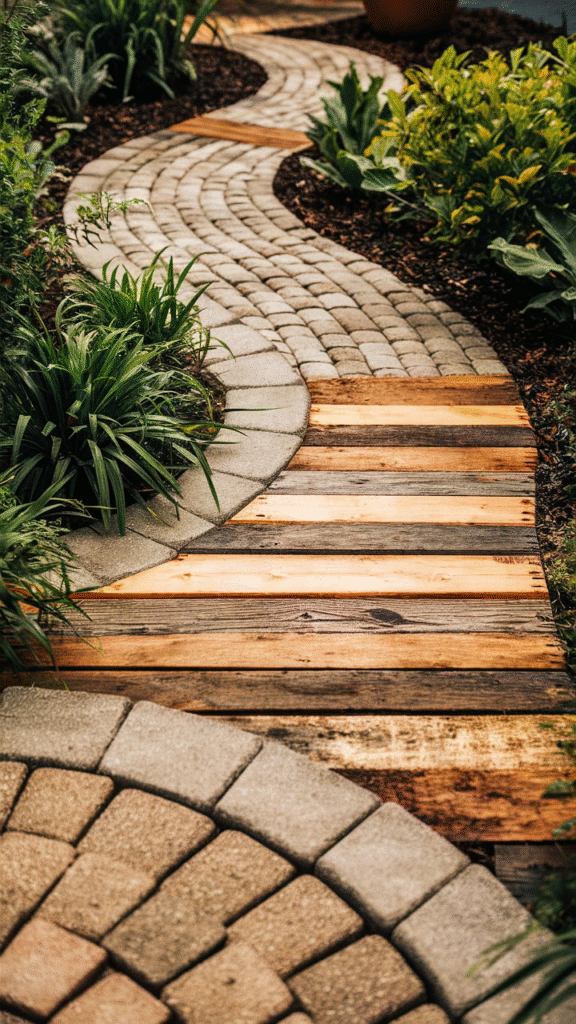
If your yard leans rustic or woodland, mulch makes for a perfect natural pathway. It’s incredibly cheap—often even free if you get wood chips from your local tree service—and blends beautifully into a garden setting.
Just like gravel, mulch needs edging to stay put. Use logs, bricks, or scrap wood to frame it.
3. Stepping Stones in Grass: Whimsy on a Dime
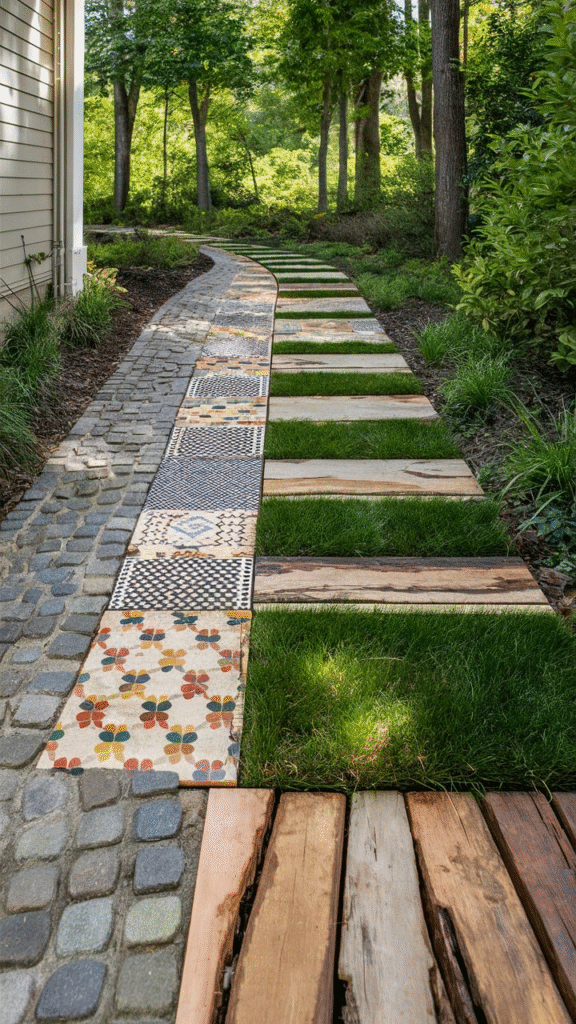
You don’t need to pave the entire path. Scatter stepping stones across your lawn or garden and let nature fill in the gaps.
You can use concrete pavers, flagstones, or even make your own using quick-set concrete and molds. The beauty lies in its simplicity and charm.
4. Broken Concrete Slab Path: Urban Chic Meets Recycling
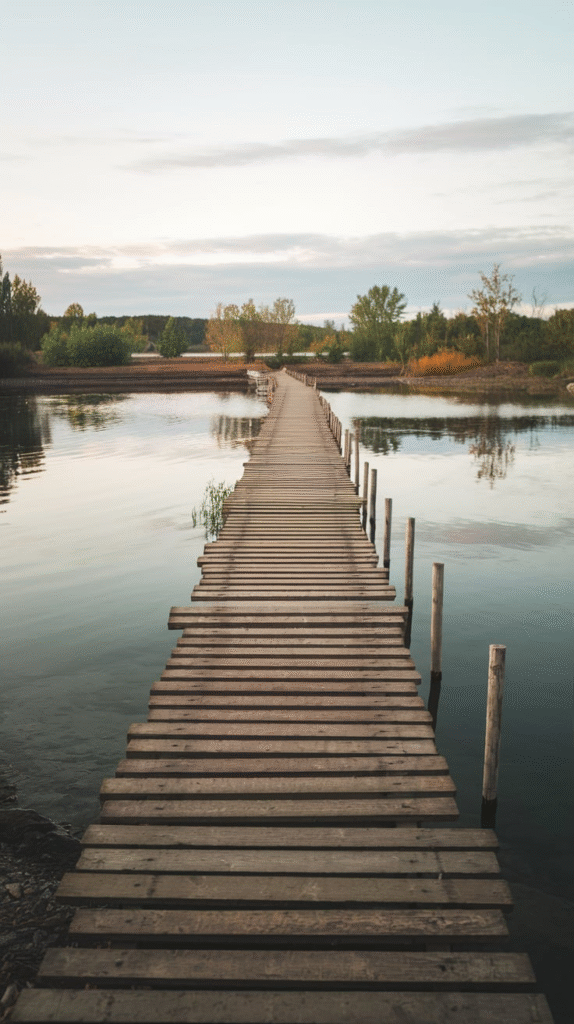
Got access to old concrete pieces? Don’t toss them. Repurpose them into a modern, irregular paver walkway that gives off serious upcycled vibes.
Lay them with gravel in between or embed them into sand for a quirky, custom look.
5. Brick Walkway: Old-World Charm
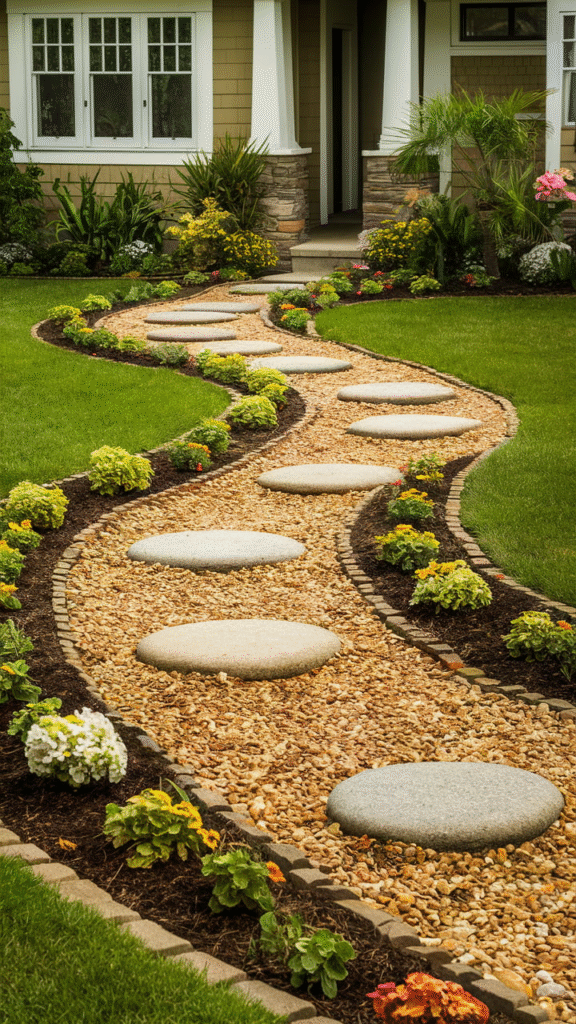
Reclaimed bricks bring timeless character. Search Craigslist, local demolition sites, or Habitat for Humanity ReStores to score bricks at bargain prices.
Whether you lay them in a classic herringbone pattern or a loose, random scatter, bricks feel nostalgic and sophisticated.
6. Wood Slice Walkway: Cottagecore on a Budget
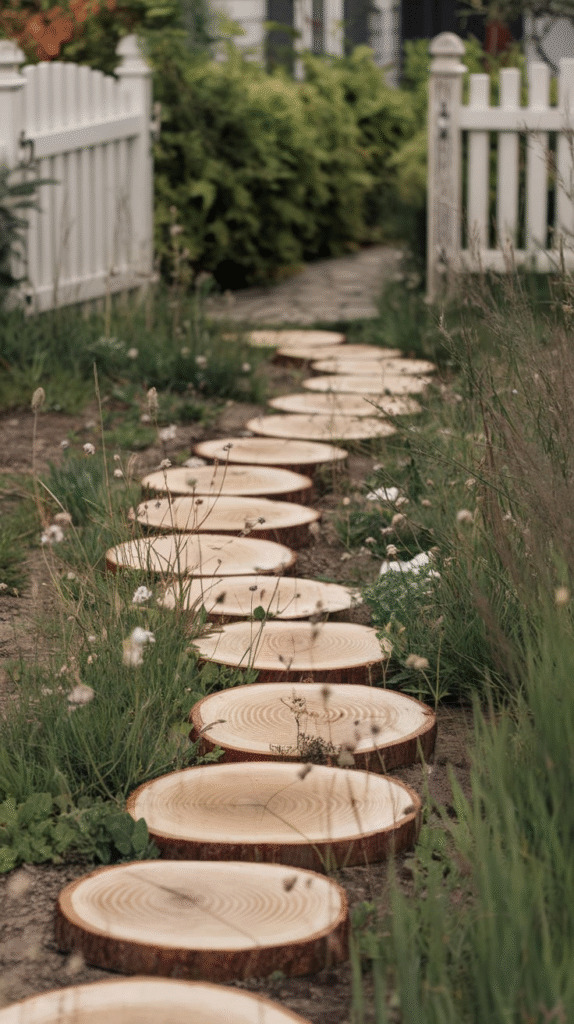
If you’ve recently cut down a tree or can get access to logs, wood slices (or rounds) can make a fairy-tale path. Cut the logs into slices about 2″ thick and place them on compacted sand.
Seal them if you want longevity, but even untreated, they’ll serve you for a few seasons while looking utterly storybook.
7. Concrete Molds: DIY Like a Pro
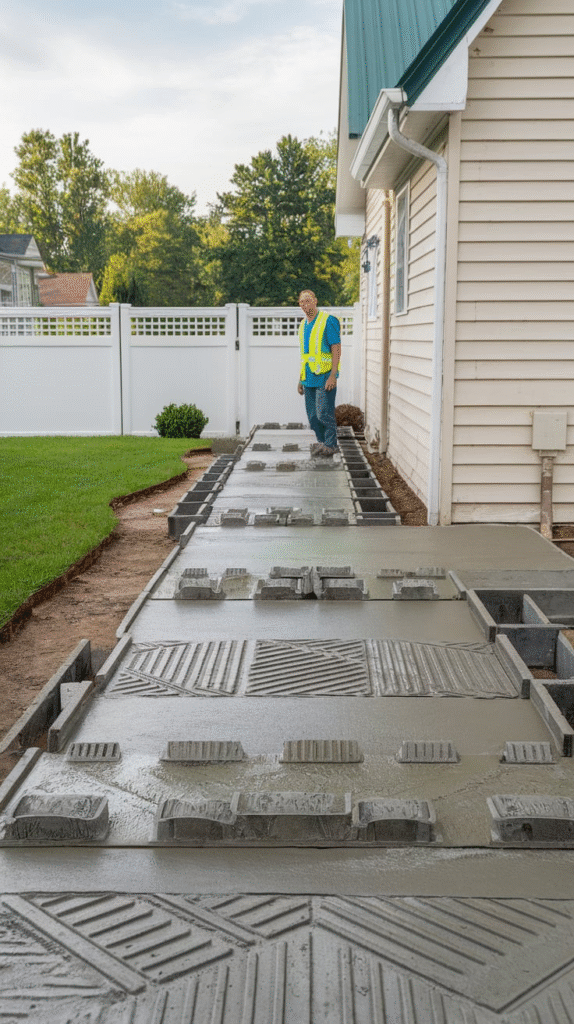
You’ve probably seen those walkways online with fancy concrete patterns. The secret? Plastic molds.
These reusable walkway molds can be found online and used with standard bagged concrete mix. Just pour, level, and let dry. The results look professional—without hiring a pro.
8. Wood Pallet Pathway: Free Never Looked So Good
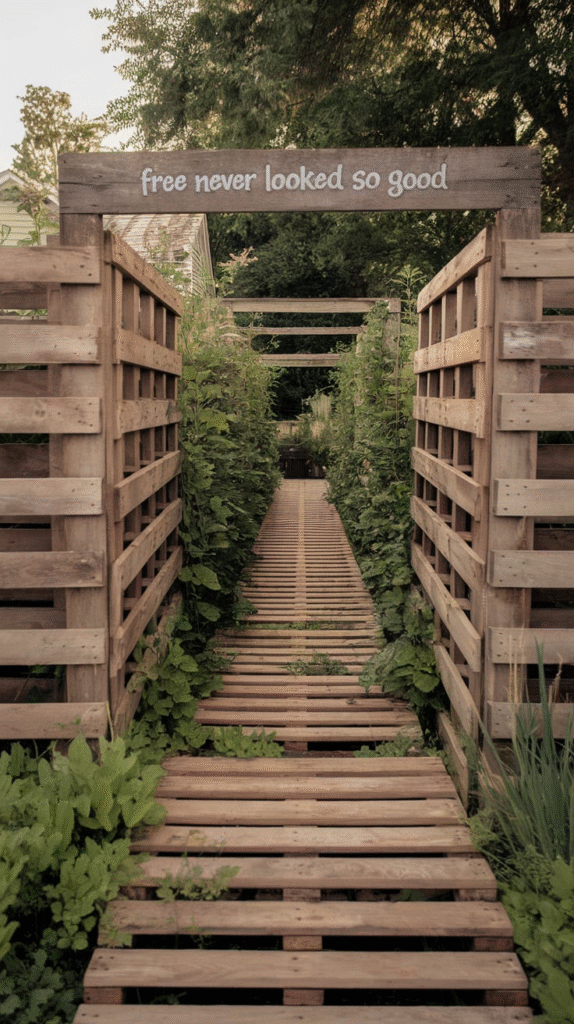
If you’ve got access to old wooden pallets, break them down into planks and create a rustic boardwalk-style path.
Lay the planks over a gravel or sand base to keep them from warping. Seal them if you want a longer-lasting finish.
9. Recycled Rubber Walkway: Surprisingly Stylish
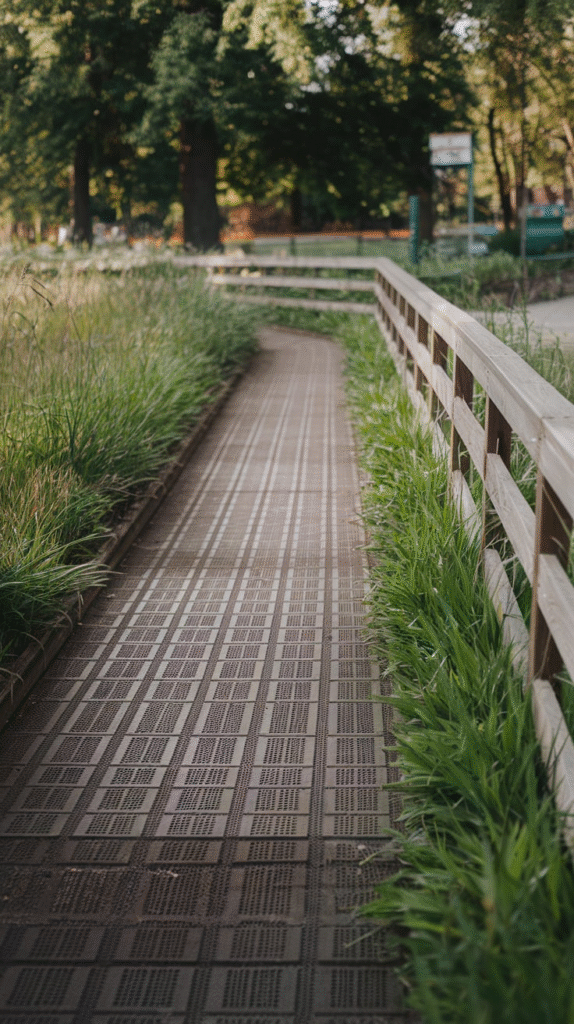
Ever thought of using recycled rubber mats or pavers? They’re durable, permeable (hello, no puddles!), and often made from old tires.
You can get rolls or tiles of recycled rubber at very low prices and lay them just like you would bricks.
10. Stone & Sand Mosaic Path: Make It Art
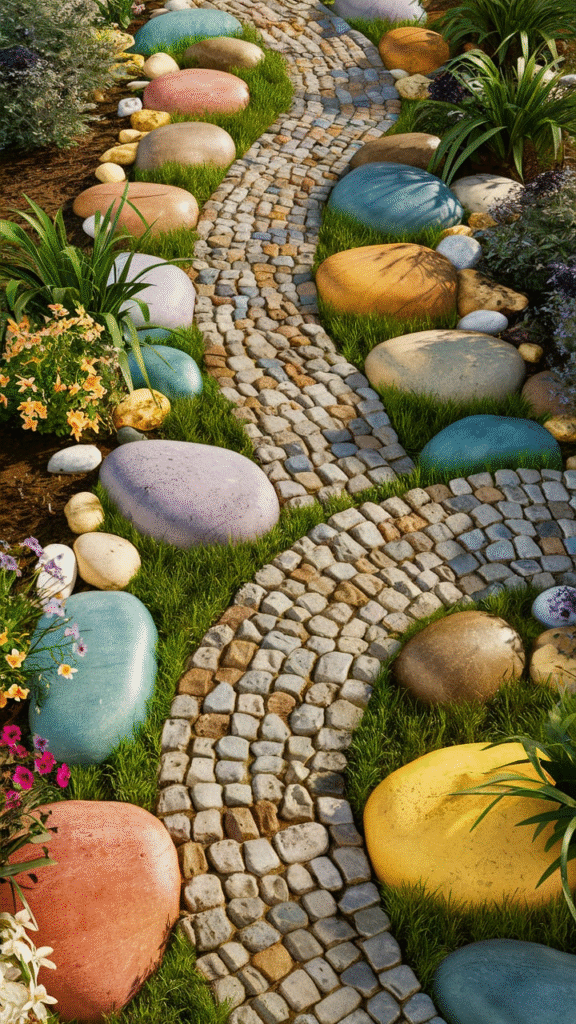
With just a few bags of sand and collected river rocks or pebbles, you can design an artistic mosaic walkway.
Use a template or wing it freestyle. Sand acts as the “glue” here, and a little patience yields a mesmerizing result.
11. Garden Tile Walkway: Indoor Style, Outdoors
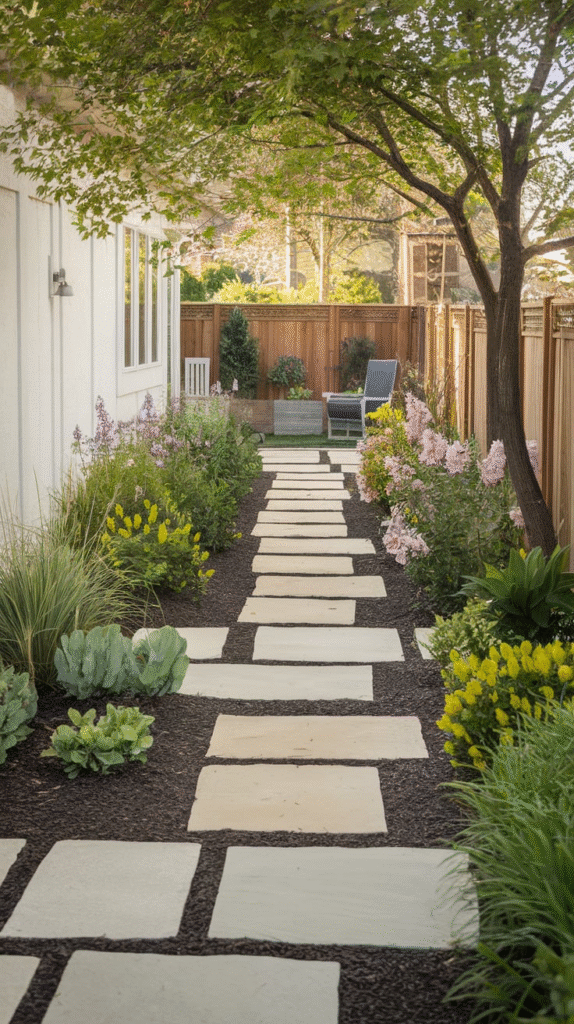
Check your garage or a tile shop’s clearance rack for leftover ceramic or porcelain tiles. Lay them down like stepping stones or fill a full path with mortar for a modern twist.
Just make sure they’re slip-resistant and sealed for outdoor use.
12. Reclaimed Slate or Flagstone Path: Timeless Elegance
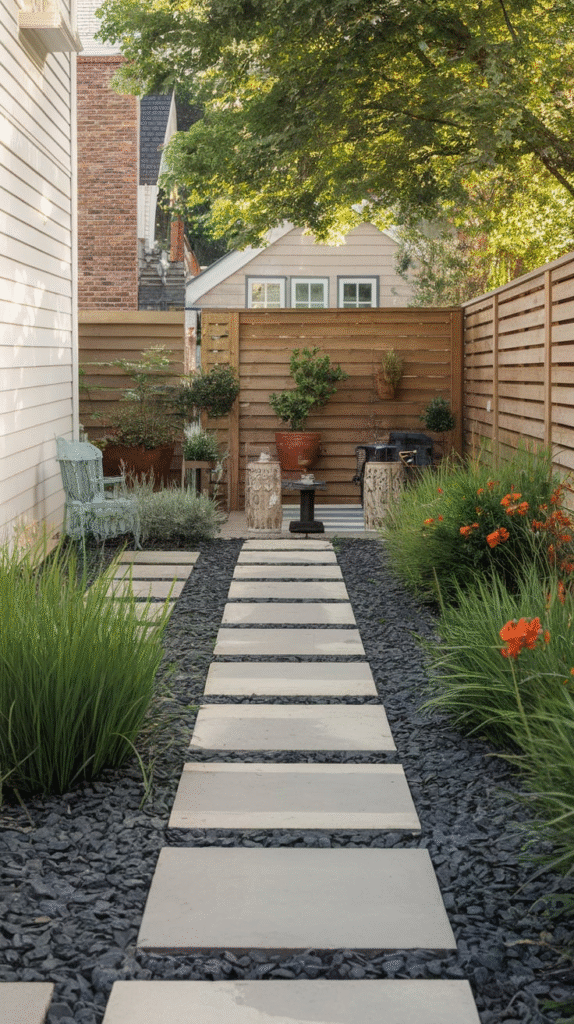
If you’re lucky enough to find discarded flagstones or slate, use them to build a natural stone path. This material usually costs more—unless you’re reclaiming it.
Set stones on compacted sand and fill gaps with gravel or groundcover plants for a lush look.
13. Corrugated Metal Pathway: Industrial Edge
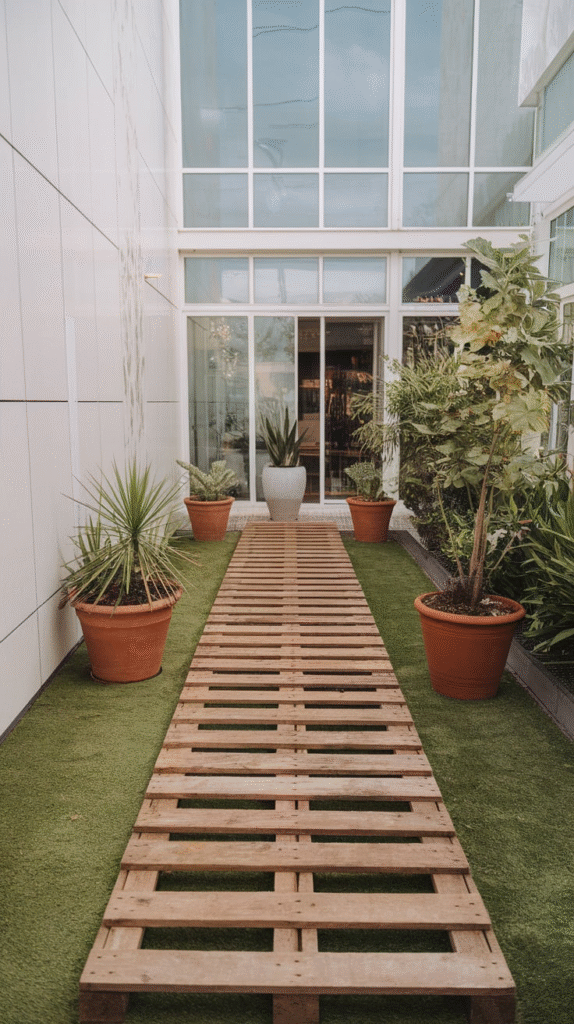
Leftover corrugated metal roofing? Cut it into long strips and lay it flush with the ground like a boardwalk. It looks futuristic and unexpected.
Use heavy-duty shears, gloves, and a sand or gravel base for safety and durability.
14. Cinder Block Steppers: Surprising and Sturdy
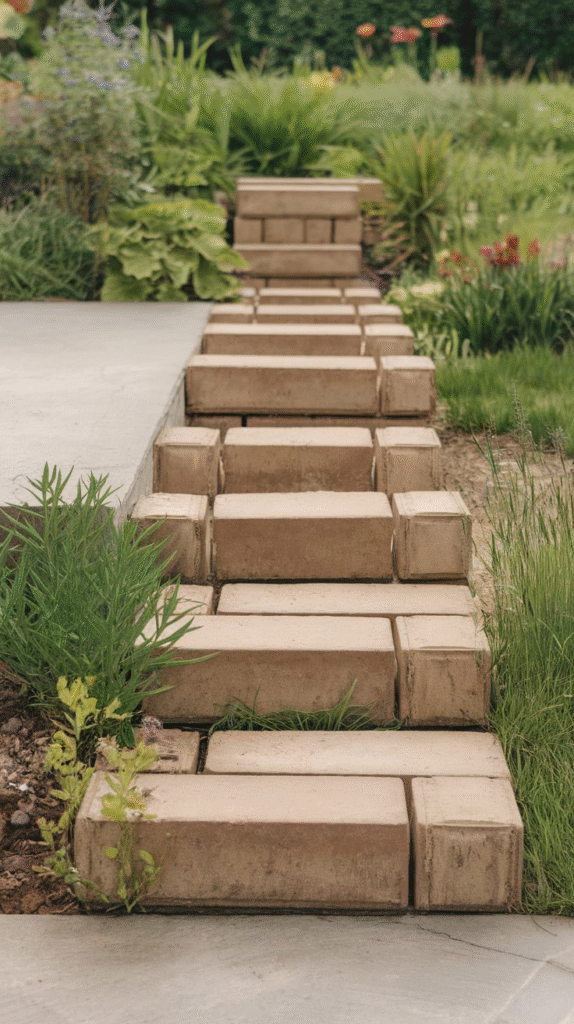
Those cheap concrete cinder blocks at your local hardware store? They’re not just for construction.
Lay them down as oversized stepping stones or use them upright with soil and succulents inside the holes. Form and function, all in one.
15. Shell Pathway: Beach Vibes on a Budget
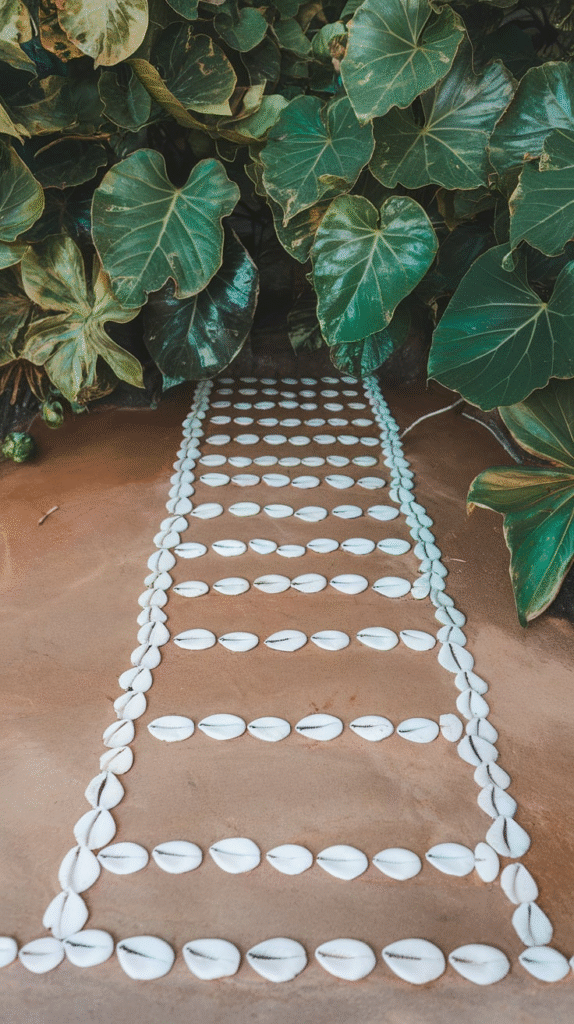
Live near the coast? Crushed seashells make a gorgeous, light-colored walkway that feels like summer year-round.
They’re often available in bulk and compact beautifully. Just rake smooth and enjoy the sound underfoot.
16. Poured Concrete Walkway with Imprints: Stamp Your Creativity
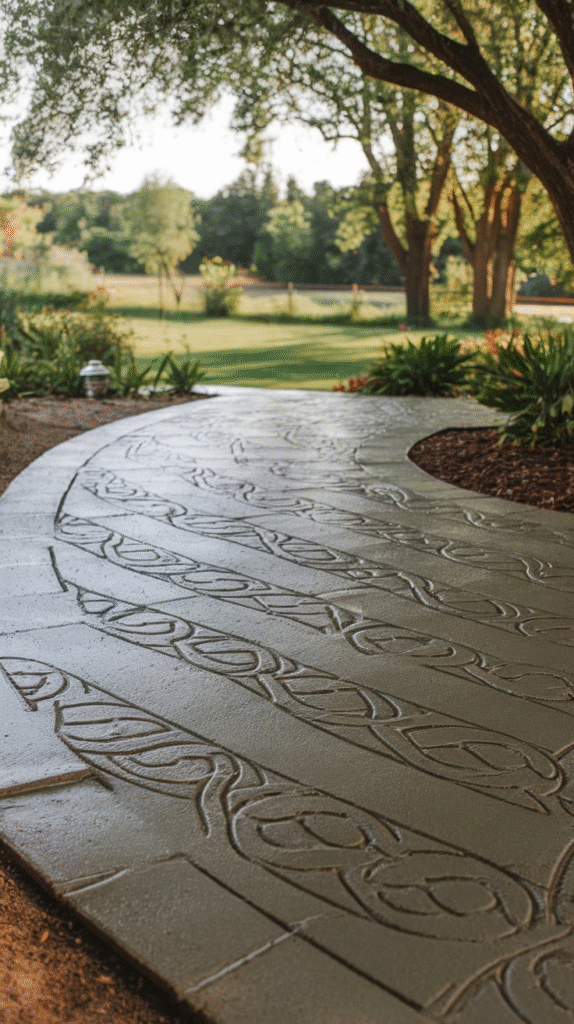
If you’re feeling crafty, pour a simple concrete path and stamp leaves, shells, or even handprints into it before it sets. Kids love helping with this, and it’s pure DIY magic.
You can even tint the concrete with dye for custom colors.
17. Gravel & Timber Walkway: Framed for Beauty
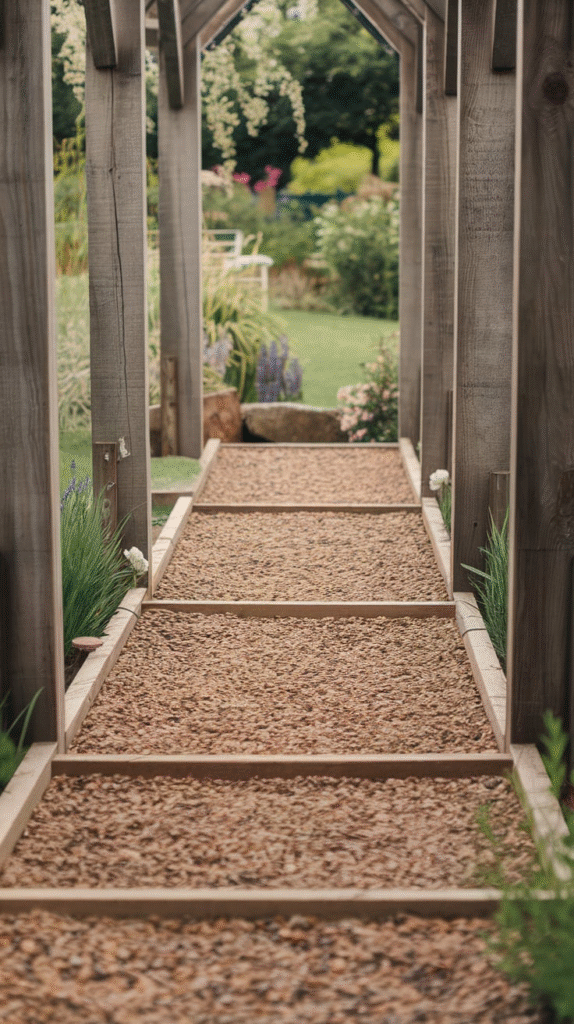
Combine pressure-treated wood planks with gravel to make a structured, elegant path. Build wooden boxes or frames, then fill each “step” with gravel or pebbles.
It’s easy, neat, and looks more expensive than it is.
18. Compact Dirt Trail with Edging: Simplicity Wins
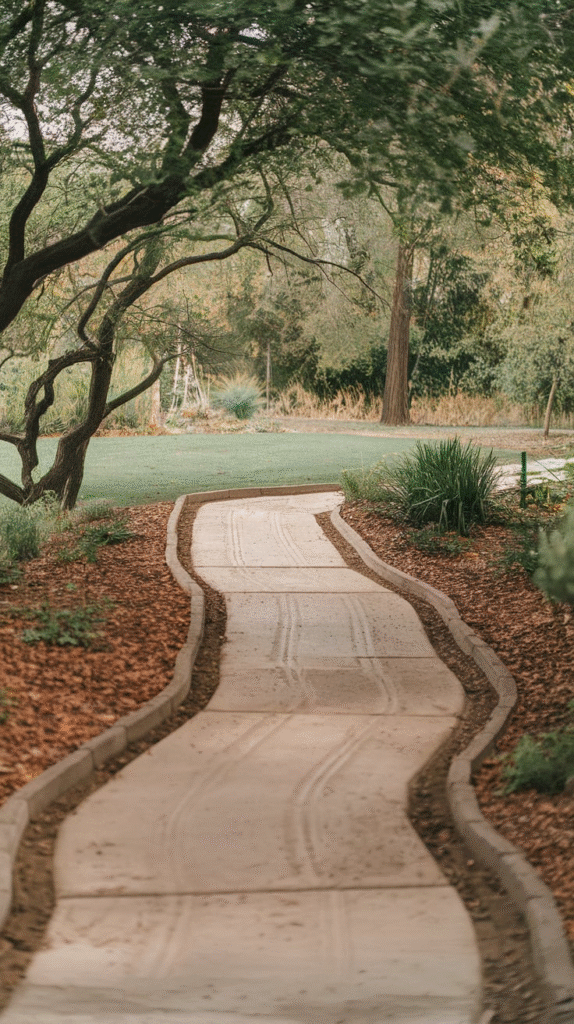
Sometimes, the best option is the simplest: a bare earth path. Rake, level, and compact the dirt, then edge it with bricks, logs, or stones.
Ideal for garden areas where grass won’t grow or you want a natural look without materials.
19. Tiled Mosaic Stepping Stones: Art Underfoot
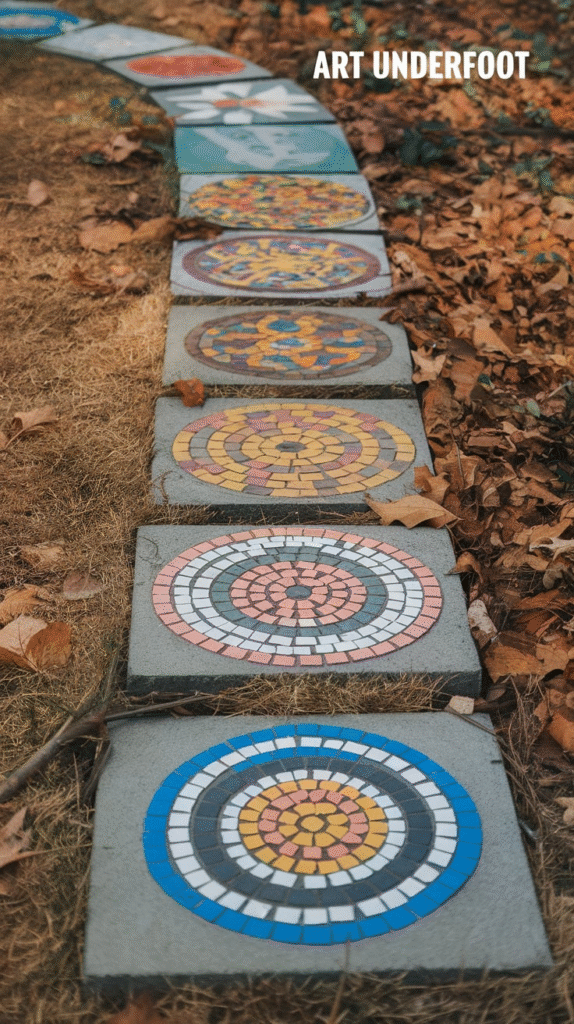
Create custom stepping stones using broken ceramic tiles. Just grab some stepping stone molds and quick-set concrete, press the pieces in before it dries, and seal for shine.
A bit like stained glass for your feet.
20. Gravel Grid Panels: Clean and Modern
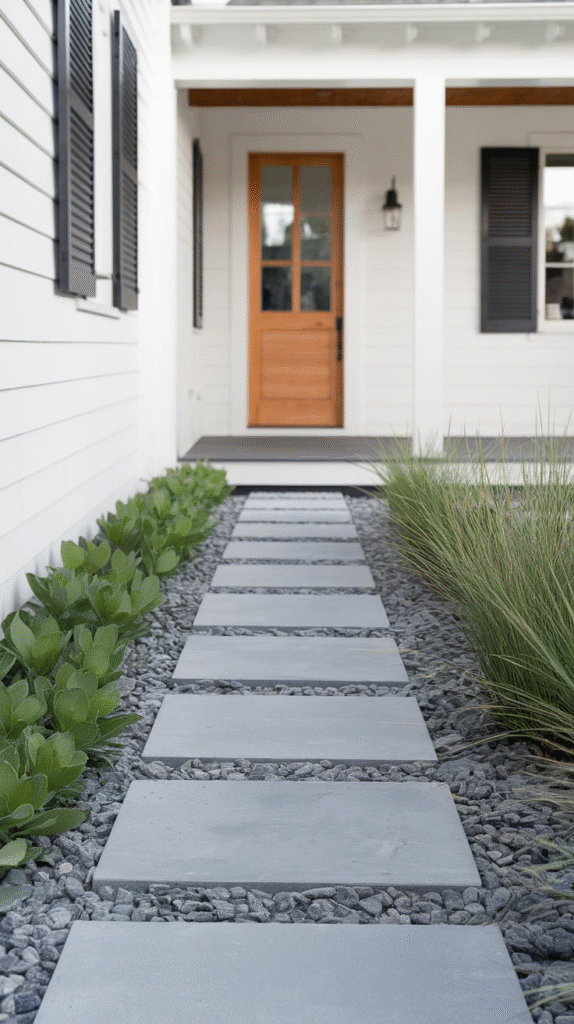
Use plastic gravel stabilizing grids (found online) to hold pea gravel in place. The grids prevent shifting and make walking more comfortable.
It gives a very modern, minimalistic look—like something you’d see in a landscape architect’s portfolio, but affordable.
21. Grass and Paver Combo Pathway: The Best of Both Worlds
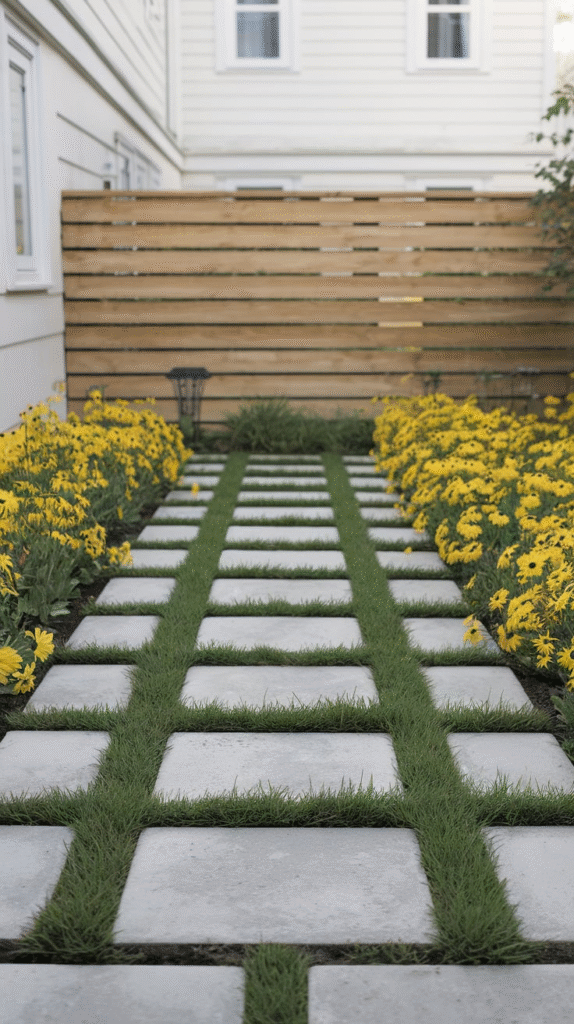
This one’s part walkway, part landscaping hack. Lay pavers (rectangular or square) with grass in between. You don’t need many pavers—just enough for footsteps.
It gives a clean, organized look without paving the whole yard and lets nature breathe between the stones.
How to Choose the Right DIY Walkway Idea
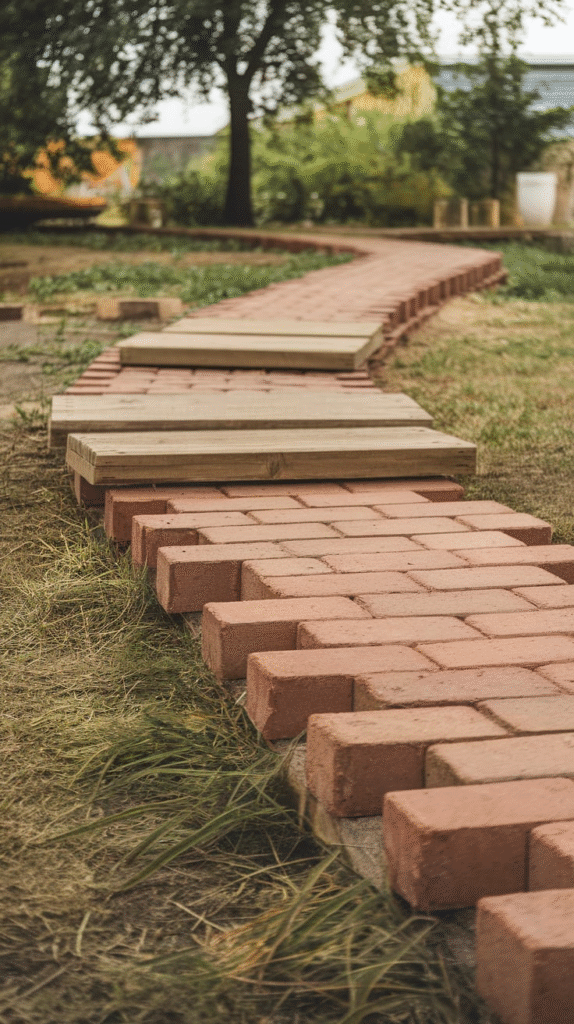
Let’s be honest—not all materials work for every yard. Before you grab your shovel, consider these factors:
Climate & Weather
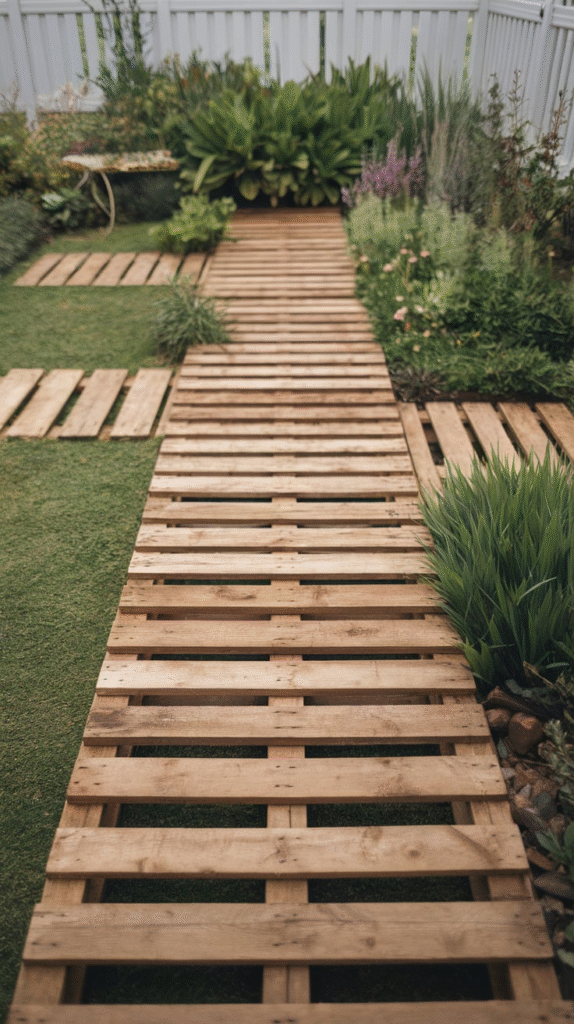
Live somewhere rainy? Skip wood unless it’s treated. Dry climates? Gravel or dirt can work beautifully.
Foot Traffic
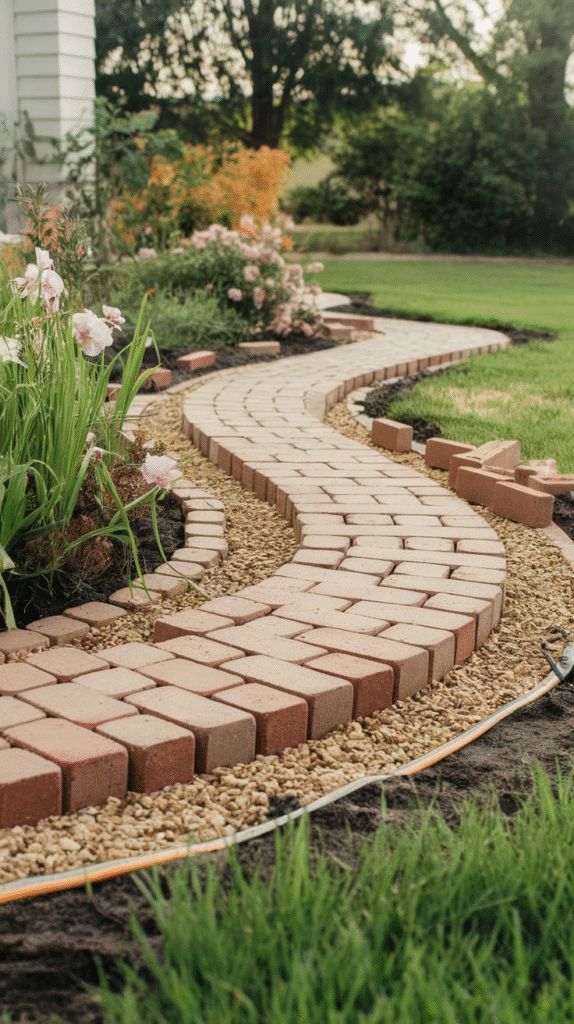
Will this walkway get heavy use? Go for sturdier materials like concrete, pavers, or bricks for main paths. Mulch and wood slices are better for light-use garden trails.
Budget
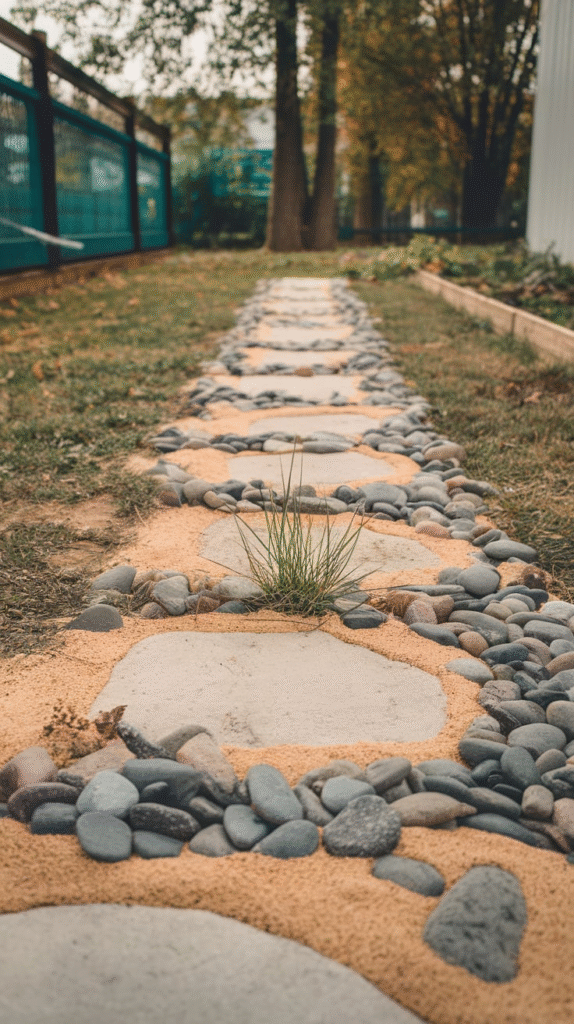
This guide is all about cheap solutions, but keep in mind long-term maintenance. Sometimes spending a little more now saves a lot later.
Available Tools
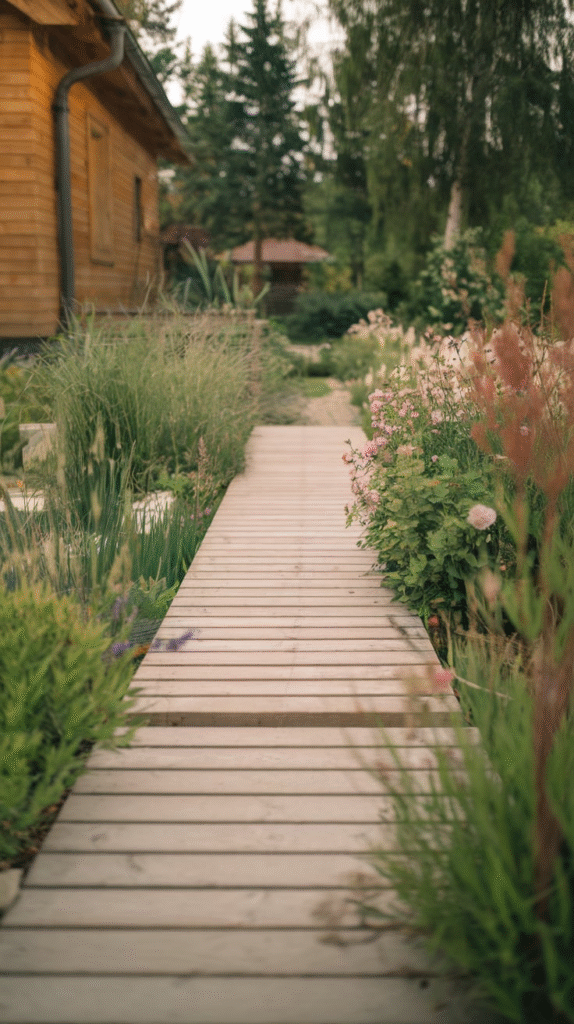
Some methods need basic carpentry skills or tools like a tamper, level, or circular saw. Pick what matches your comfort level.
Personal Tips for DIY Walkway Success
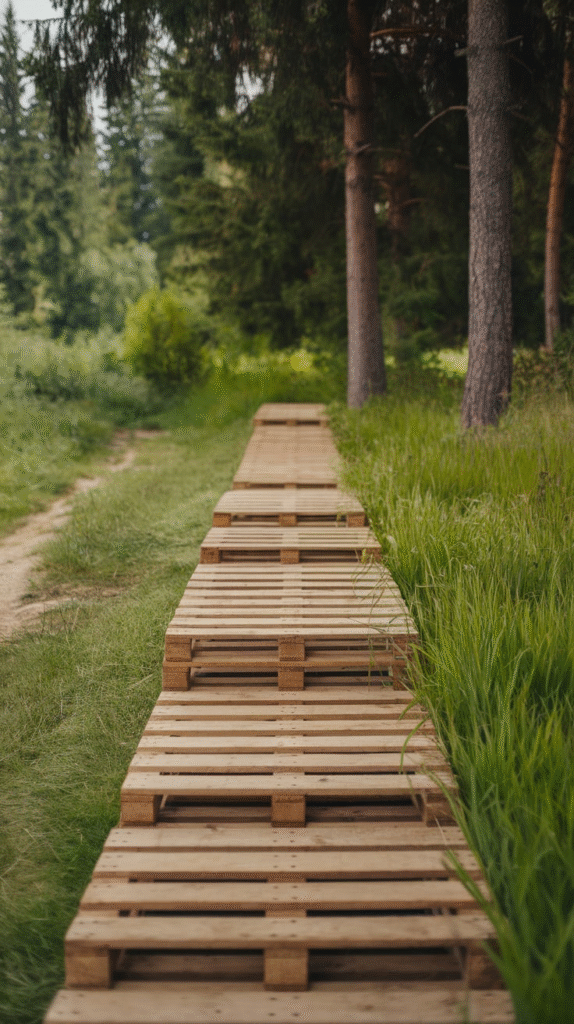
Don’t Skip the Base
Even for budget paths, proper ground prep is the foundation (literally). Level the soil, add a sand or gravel base, and edge your walkway for durability.
Think in Sections
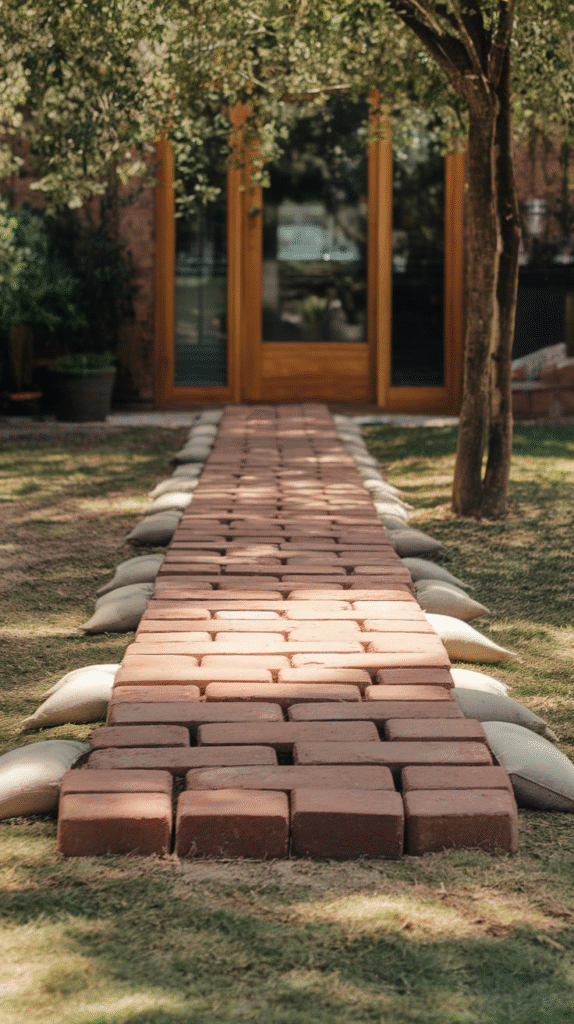
Building a 20-foot path? Break it into 4–5 foot sections to keep things manageable and avoid burnout.
Mix and Match
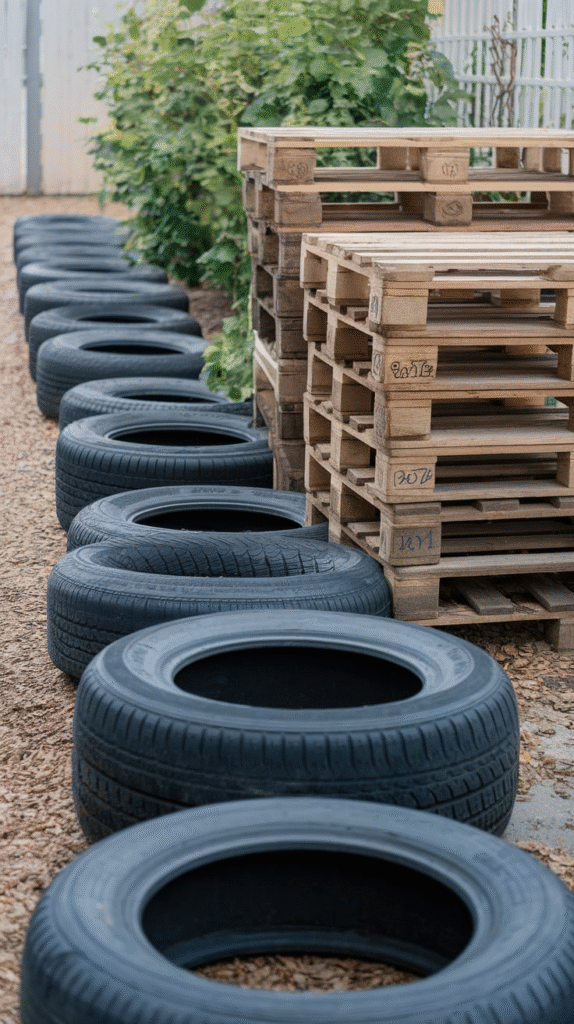
Who says you need to stick to one material? Combine gravel and bricks, or stepping stones with mulch, for custom designs that look like they came from a landscape designer’s sketchpad.
Keep Extra Materials
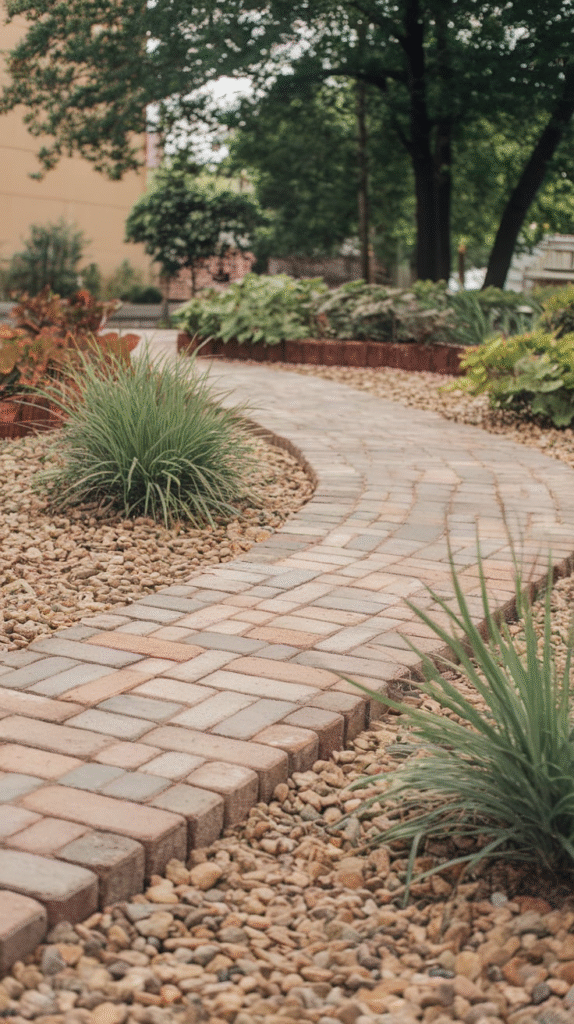
You’ll often need a few more bricks, planks, or stones than you think—accidents happen, cuts are needed, or that one perfect piece just breaks.
Conclusion
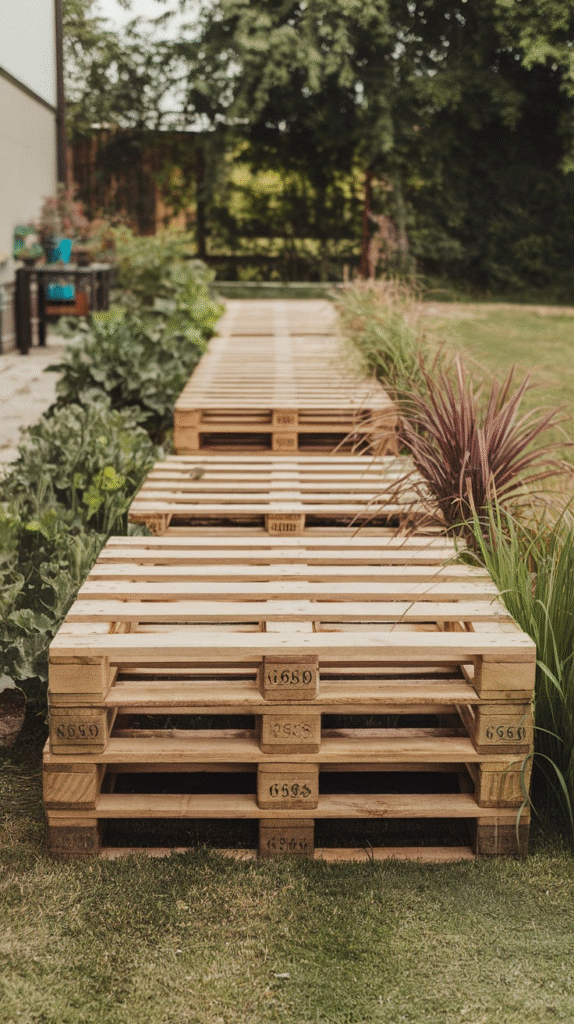
Building a walkway, especially a DIY walkway on a budget, is about more than just saving cash. It’s a way to turn ordinary space into a purposeful, beautiful feature that guides both your feet and your imagination.
When I step out now onto the path I built with my own two hands—mud-stained jeans, calluses, and all—it’s not just a walkway. It’s a memory, a little bit of sweat equity, and a source of pride.
Your yard deserves that kind of magic too. So pick your favorite idea, roll up your sleeves, and start laying the groundwork for something beautiful.

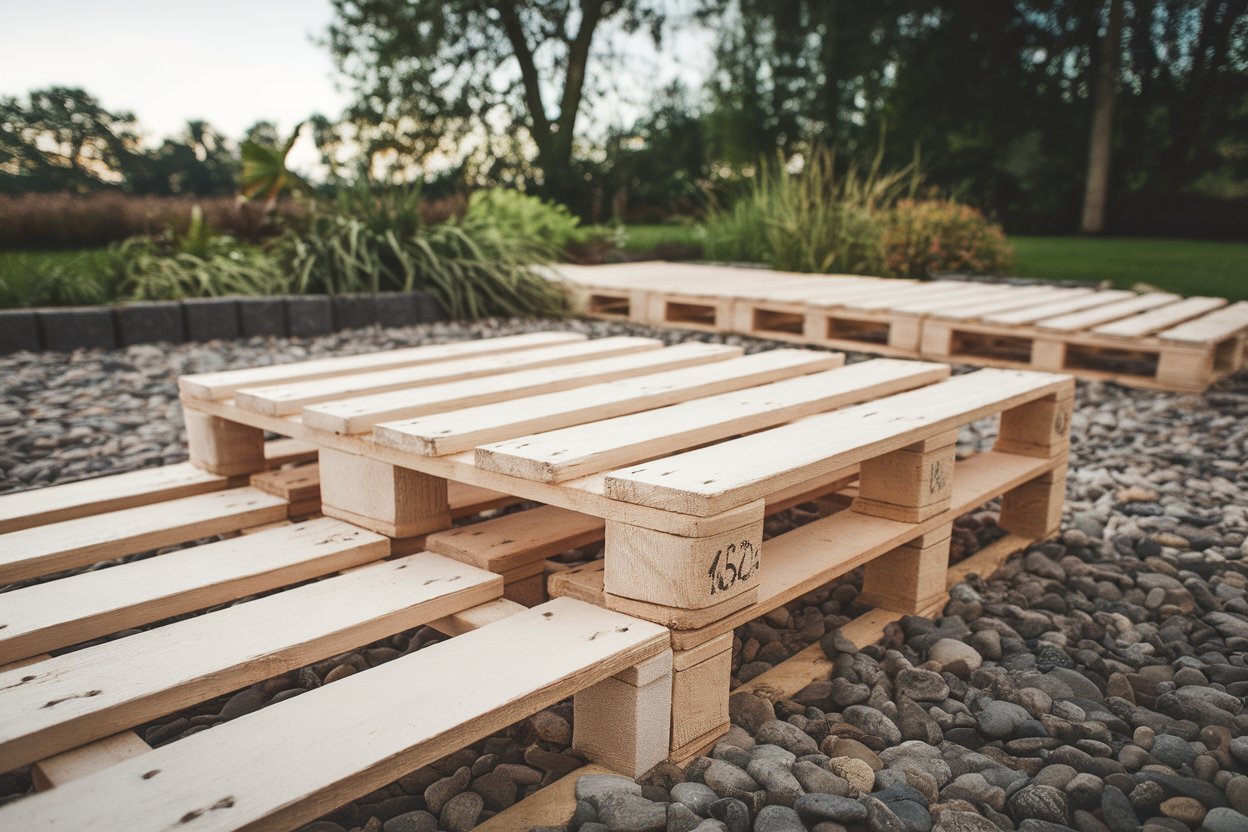
Leave a Reply